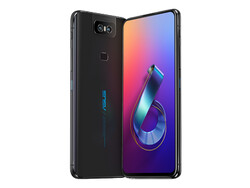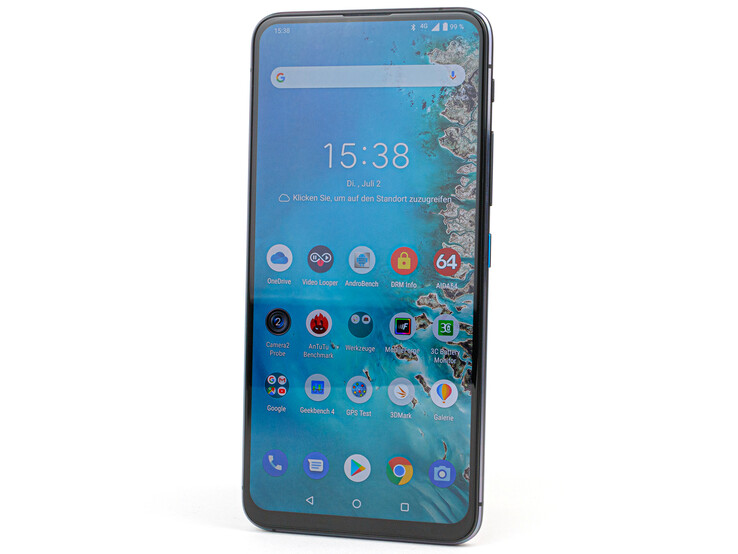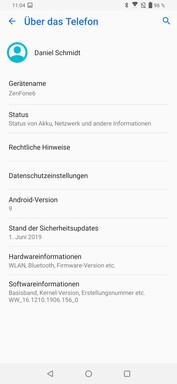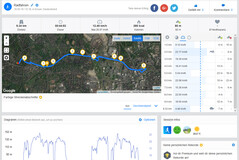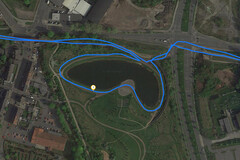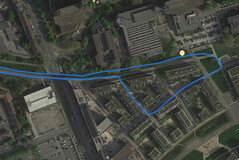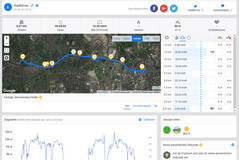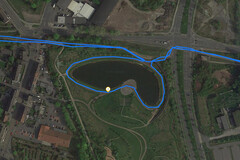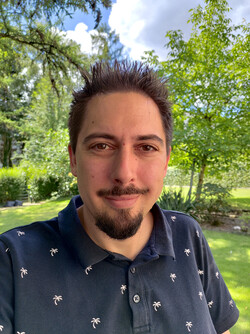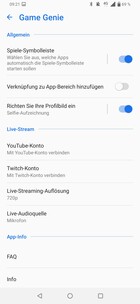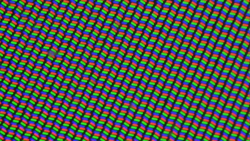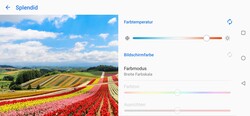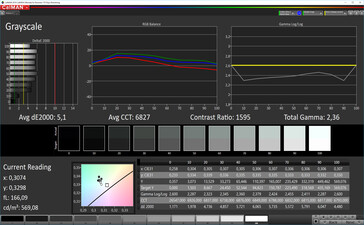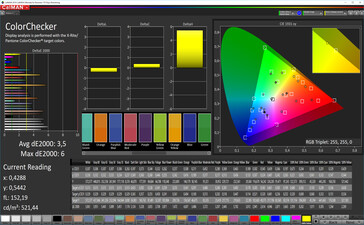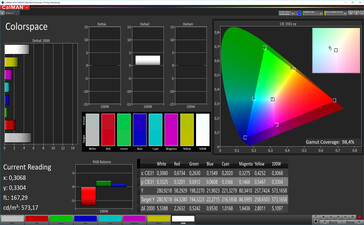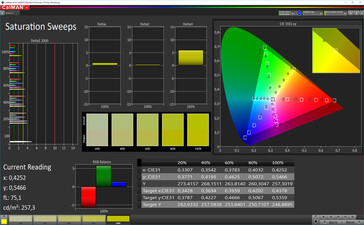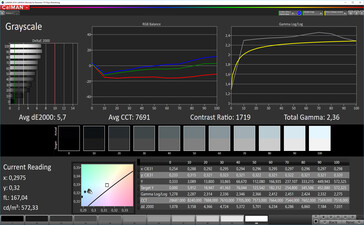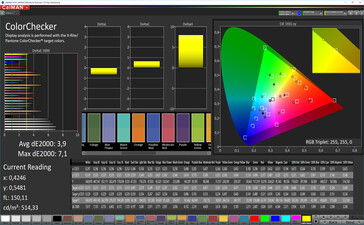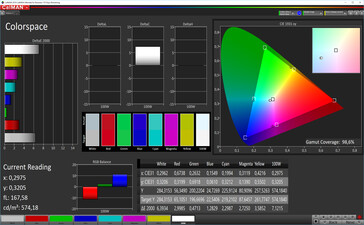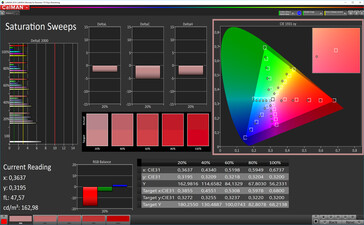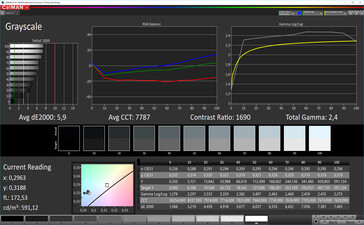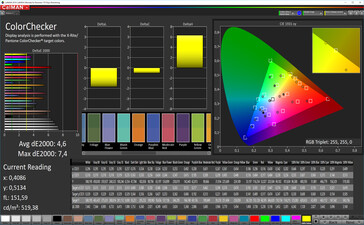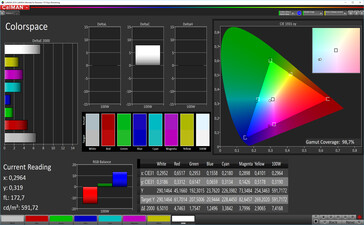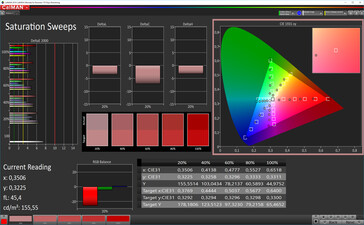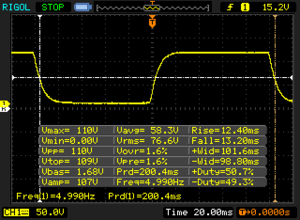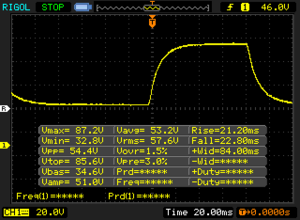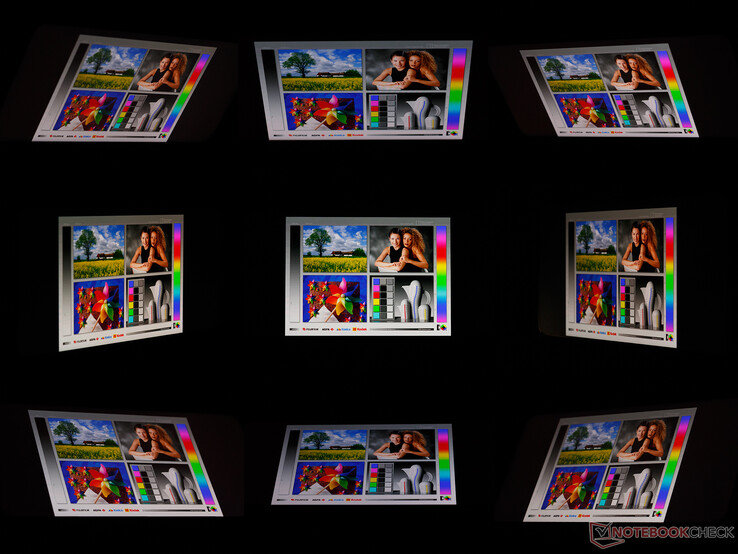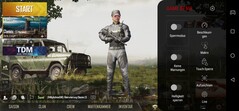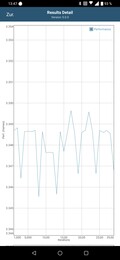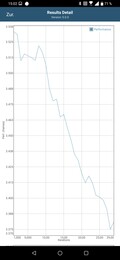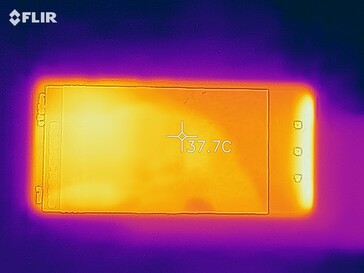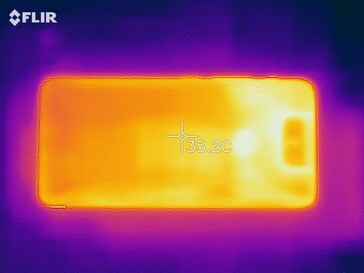Asus ZenFone 6 (ZS630KL): Reviewing the King of Stamina
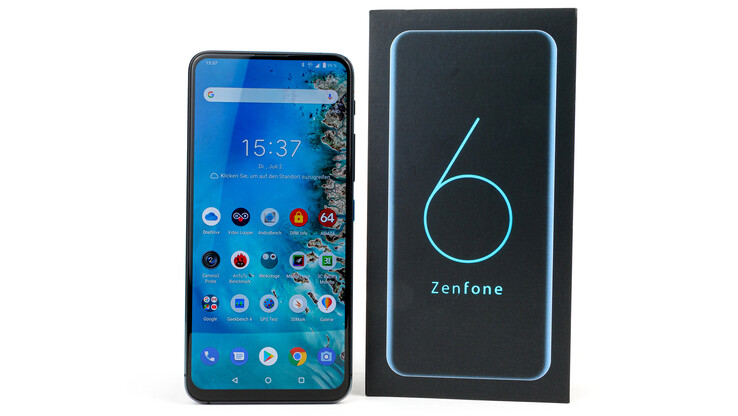
The Taiwanese OEM shrinks its smartphone portfolio surrounding the Asus ZenFone 6 (ZS630KL) and omits the previous year's Lite and Z versions. Thus, the new Asus phone is the successor of the ZenFone 5Z and offers premium features for a cheap price.
The ZenFone 6 sports the most powerful Qualcomm processor to date and comes in various memory configurations. The entry level model contains 6 GB of RAM and 64 GB of internal storage, while 6/128 GB and 8/256 GB models are also available. While the smallest configuration starts at around 500 Euros (~$563), the two larger ones can be purchased for 560 (~$630) and 600 Euros (~675 USD), respectively. The storage space of all versions is expandable and the features are otherwise identical.
The flip camera that can be rotated from the back to the front when needed, is certainly the ZenFone 6's defining feature. It enables Asus to deliver a seamless display with small bezels, no interruptions due to a notch and a great screen-to-body ratio. Special attention has also been paid to the audio capabilities, where a dedicated audio chipset facilitates good audio output through the audio jack. The bulky 5.000 mAh battery is not only comparatively massive, it can also be recharged quickly thanks to Quick Charge 4.0.
Due to its relatively low price, the Asus ZenFone 6 directly competes against the so-called flagship killers, a term that most notably encompasses devices such as the OnePlus 7, but also the ZTE Axon 10 Pro, Xiaomi Mi 9 and the Samsung Galaxy S10e. Those who are looking for a new iPhone in this price category will have to turn to the older iPhone 7.
Case - Strong Materials with Small Pitfalls
While at 190 grams (~0.42 lbs or ~6.70 oz), the Asus ZenFon 6 is not particularly lightweight, the Taiwanese manufacturer did manage to keep the weight relatively low considering the size of both the battery and the device itself. The specified design height is 9.2 millimeters (~0.36 inches), we only measured 8.9 millimeters (~0.35 inches). In its collapsed state, the camera protrudes 1.6 millimeters (~0.06 inches) from the back of the case. Asus is offering a black and a silver variant of the smartphone.
While the front and the back of the ZenFone 6 are defined by their Corning Gorilla Glass 6 surfaces, the edges consist of an aluminum alloy that gives a very robust first impression. Twisting attempts do not appear to impress the phone, although there is a loud clicking sound even when using very little force. We very much appreciate the good construction quality. Clearances are small and uniform, and only the additional plastic frame around the display somewhat taints the overall high-quality impression. The same can be said for the plastic Google Assistant button, particularly since the power button draws attention to itself due to its well executed color accent.
The card tray is made of very thin plastic and does not look like it was made to last. It can, however, hold a microSD card in addition to two nano SIM cards. The smartphone is not certified to be dust or water-resistant.
Connectivity - ZenFone 6 with Slow USB Port
The Asus ZenFone 6 offers a USB 2.0 port with the modern type-C design for data transfers, but it did not exactly blow us away with its speed during our testing. We were able to measure data transfer rates of only 29 Mb/s. There is no wired video output, peripherals and external storage mediums can still be connected however (OTG).
The storage space can be expanded to up to 2 TB with a microSD card. This only reflects the theoretical maximum capacity of the SDXC standard that may be achievable in the future. As of this writing, microSD cards have a maximum capacity of 512 GB. The additional storage can only be used for storing media files, since it cannot be formatted as internal storage.
Despite its thin-bezel design, the Asus ZenFone 6 has a non-configurable notification LED.
Software - ZenFone with Android 9
The operating system of the Asus ZenFone 6 is Android 9.0 Pie, which at the time of testing has already been updated with the security patches from June 1st 2019. From our experience with Asus smartphones, users of the manufacturer's top of line products can expect quarterly Updates. Unfortunately, Asus does not specify exact update intervals.
There are not too many preinstalled apps. Aside from the Google mainstays, there are two Asus apps, Facebook and Instagram. At least the third party apps can be fully uninstalled by users.
The slightly modified interface of the ZenUI 6.0 does not include user account control and the system can only store local backups on the microSD card.
Communication and GPS - Asus Phone with Throttled LTE
The Asus ZenFone 6 comes with a Wi-Fi 5 module (IEEE 802.11 a/b/g/n/ac) with MIMO antenna technology and supports both the 2.4 GHz and the 5.0 GHz frequency bands. The measurements with our reference router Linksys EA 8500 yield good data transmission rates and while the data reception rates look promising, there was a prolonged dip in the data transfer rate that caused the average value to drop accordingly. There is room for improvement here, although the speed is more than sufficient for daily use. In our testing, we were also pleased with the range of the Wi-Fi, which enabled it to uphold a stable connection across multiple floors.
Apart from the usual 2G frequencies, the ZenFone 6 only offers the essentials when it comes to 3G support. Globetrotters will miss a fewof LTE Bands as well. While users should not experience any issues in Europe, a few important bands for China and several bands common in the US are missing. Asus does not fully utilize the transfer rate capabilities of the SoC either and instead throttles the downstream speed to 1 Gbit/s.
| Networking | |
| iperf3 transmit AX12 | |
| Asus ZenFone 5Z ZS620KL | |
| Xiaomi Mi 9 | |
| ZTE Axon 10 Pro | |
| Asus ZenFone 6 ZS630KL | |
| Apple iPhone 7 (Klaus I211) | |
| OnePlus 7 Pro | |
| Samsung Galaxy S10e | |
| iperf3 receive AX12 | |
| Xiaomi Mi 9 | |
| ZTE Axon 10 Pro | |
| Asus ZenFone 5Z ZS620KL | |
| Apple iPhone 7 (Klaus I211) | |
| Samsung Galaxy S10e | |
| OnePlus 7 Pro | |
| Asus ZenFone 6 ZS630KL | |
The Asus ZenFone 6 uses all of the common global navigation satellite systems (GNSS): GPS, GLONASS, BeiDou and Galileo. In order to further improve the locating capabilities, the American and European systems support dual connectivity.
In our practical test, the smartphone has to go up against the Garmin Edge 500. We take both devices along with us on a short bike ride. The bike computer measures a total distance that is around 70 meters (~76 yd) shorter than what the ZenFone recorded and a glance at the track course quickly reveals the underlying reason; the Asus phone tends to record positions next to the route. The performance is still sufficient for navigation tasks, we would have expected a higher accuracy due to the technical prerequisites however.
Telephony and Call Quality - ZenFone Shows Weakness
The Asus ZenFone 6 offers a slim telephony app with just two tabs in total that show past calls and contacts. Thankfully, SIP support is available and so SIP accounts can be integrated seamlessly. Furthermore, it is also possible to record calls. We are less pleased with the lack of support for VoLTE and Wi-Fi Calling. According to our research, this also pertains to the North American models.
The call quality is satisfactory. The voice of our conversational partner usually echoes very noticeably and does not sound very natural, while we are - for the most part - easy to understand. The noise cancelling works exceptionally well and filters out traffic sounds reliably. We like the speaker as well, particularly since the microphones are able to capture the user's voice clearly, even if they are a little further away from the ZenFone.
Cameras - The Flip Camera is the Defining Feature of the Asus Phone
The Asus ZenFone 6 has a so-called flip camera, which comes with two photographic objectives. Equipped with the Sony IMX586 sensor that we are already familiar with from other manufacturers and devices such as the Honor View 20 (f/1.8), the Xiaomi Mi 9 (f/1.75), ZTE Axon 10 Pro (f/1.7) or OnePlus 7 (f/1.7), the wide-angle default camera is at the heart of the smartphone. The only obvious remaining differentiator is the nominal aperture, which Asus specifies as f/1.79. However, even in this category, the competitors are very close to one another. The ZenFone additionally has a 13 MP ultrawide photographic objective with a digitally simulated 200% magnification.
But here is the kicker: The ZenFone 6's dual-camera can be rotated to be front-facing, where it can then be used for selifes. This grants users access to features such as autofocus and Ultra HD videos for these recordings. Asus does not restrict these features in any way.
We are very pleased with the quality of selfies. Here, the good HDR mode is able to overcome various lighting conditions. The motive is represented sharply and may even look overly sharpened, depending on your taste. The Bokeh is done right as well and even difficult transitions between the hair are depicted cleanly. On top of that, there are five filters for fine tuning the portrait mode that allow for skin tone, diffusion, eye size, facial width or skin brightening optimizations. Thankfully, most of the features are tuned quite conservatively or completely disabled ex-factory.
The Asus ZenFone makes a good impression when it comes to conventional recordings as well. Photos taken during the day again exhibit a high degree of sharpness, which often looks particularly synthetic in the foliage of trees. Pictures turn out well otherwise however and have both good illumination and a high dynamic range. In the dark, the Asus phone falls slightly behind the competition and has to admit defeat in a direct comparison with the Honor View 20.
Apart from a night mode, the Asus smartphone offers a manual mode, but no RAW support. We also wish to highlight the panorama mode, which can be taken care of almost entirely by a fully automatic pan by the flip camera. The camera position is continuously variable, which allows for taking photos from unusual angles. There is also falling detection, which retracts the camera if necessary.
We are similarly pleased with the quality of videos that can, at most, be recorded at Ultra HD with 60 frames per second, although these recordings are limited to five minutes. All other resolutions are available without time constraints. While there is no optical image stabilization, there is an electronic one that works in all modes and does a fairly good job as well. Sound recordings benefit from the two sensitive microphones, although on the flipside, rotations from the flip camera are recorded unpleasantly loudly as well.
We performed further tests of the Asus' dual-camera under controlled lighting conditions. The smartphone does a good job of representing the ColorChecker image and even though the colors look a little too bright and oversaturated, the end result does not appear unnatural. Meanwhile, the Color temperature is slightly too warm.
The ZenFone 6 is able to depict the center of our test chart very sharply, fine details are ever so slightly blurred however. Color gradients look good as well with only dark text on dark backgrounds and edges of the image exhibiting a decrease in contrast. In these areas, a lack of sharpness can be observed as well, although this is neither uncommon nor excessively pronounced.
Accessories and Warranty - Case and Headset Included
The Asus ZenFone 6 (ZS630KL) comes with a modular power adapter (5V, 2A; 9V, 2A), a data cable (USB type-A to USB type-C), a protective case made of plastic, a headset, as well as a quick start guide and a warranty card. A case with an integrated stand can be purchased separately for around 30 Euros (~$34) through through the Asus online shop.
The warranty period is 24 months and cannot be extended.
Input Devices & Handling - ZenFone with Smart Key
The capacitve touchscreen of the Asus ZenFone 6, which is able to detect up to ten contacts simultaneously, showed good gliding properties and good reliability in our tests. Google's GBoard serves as the default keyboard, those who prefer another variant can simply install their favorite keyboard from the Play Store.
The fingerprint sensor on the back of the Asus smartphone can store up to five fingerprints and it was able to very quickly and reliably recognize them in our test. Alternatively, a less secure 2D facial recognition is available, which is less than subtle due to the flip camera extending every time in order to identify the user. While this does work well, it usually takes a short moment.
Furthermore, the ZenFone 6 includes a button that is called "smart key". Even though it is preconfigured as Google Assistant key, it can be reassigned. Up to three functions can be assigned to the key and they can be invoked by pressing the key once, twice or holding the key. Unfortunately, the key's possible assignments are preconfigured and there is currently no way to freely select an app or another virtual assistant.
A host of other useful features such as a One Hand Mode, Asus Game Genie, a Private Listening Mode and Twin Apps are available as well. Most of the keys can be easily reached with one hand, with only the smart key requiring a change of grip. The keys have some travel distance and a distinct feedback, so no complaints here.
Display - ZenFone 6 with PWM Despite IPS
The Asus ZenFone 6 possesses a 6.4 inch (16.26 cm, 100.5 cm²) IPS display with a resolution of 2,340x1,080 pixels. The image on the panel is thus incredibly sharp and individual pixels are not discernable with the naked eye even among detailed structures.
Our measurements with a fully white background and the ambient light sensor enabled reveal the ZenFone 6's good brightness, although its evenness, while not disrupting day-to-day use, leaves something to be desired. It is also possible that our test unit's display is flawed. Measurements without the ambient light sensor yield identical results, which signifies that the full luminosity is available in manual mode. The Asus phone misses the mark when it comes to real-world measurements with evenly distributed bright and dark areas, where the maximum brightness in the center of the display drops to 459 cd/m² and the black value climbs to 0.4 cd/m² (before: 0.31 cd/m²). This ultimately causes the contrast ratio to drop to 1.148:1. While this is not a bad value, it is significantly lower than the result of the full-screen measurements.
At 4.80 cd/m², the minimum luminance of the panel is decent and would lend itself well to reading, particularly in combination with the mode for reducing eye strain, were it not for Asus' use of PWM for regulating the brightness level. While the frequency is relatively high and consistent, very sensitive users may still experience some issues.
| |||||||||||||||||||||||||
Brightness Distribution: 79 %
Center on Battery: 569 cd/m²
Contrast: 1835:1 (Black: 0.31 cd/m²)
ΔE ColorChecker Calman: 3.5 | ∀{0.5-29.43 Ø4.78}
ΔE Greyscale Calman: 5.1 | ∀{0.09-98 Ø5}
98.7% sRGB (Calman 2D)
Gamma: 2.36
CCT: 6827 K
| Asus ZenFone 6 ZS630KL IPS, 2340x1080, 6.4" | Asus ZenFone 5Z ZS620KL 2246x1080, 6.2" | ZTE Axon 10 Pro AMOLED, 2340x1080, 6.5" | OnePlus 7 Pro AMOLED, 3120x1440, 6.7" | Xiaomi Mi 9 AMOLED, 2340x1080, 6.4" | Samsung Galaxy S10e AMOLED, 2280x1080, 5.8" | Apple iPhone 7 IPS, 1334x750, 4.7" | |
|---|---|---|---|---|---|---|---|
| Screen | -12% | -6% | 37% | 41% | 21% | 21% | |
| Brightness middle (cd/m²) | 569 | 601 6% | 402 -29% | 586 3% | 593 4% | 426 -25% | 556 -2% |
| Brightness (cd/m²) | 537 | 565 5% | 399 -26% | 584 9% | 587 9% | 427 -20% | 519 -3% |
| Brightness Distribution (%) | 79 | 90 14% | 92 16% | 97 23% | 94 19% | 96 22% | 90 14% |
| Black Level * (cd/m²) | 0.31 | 0.6 -94% | 0.34 -10% | ||||
| Contrast (:1) | 1835 | 1002 -45% | 1635 -11% | ||||
| Colorchecker dE 2000 * | 3.5 | 3.4 3% | 4.1 -17% | 1.39 60% | 0.9 74% | 2.14 39% | 1.3 63% |
| Colorchecker dE 2000 max. * | 6 | 6.1 -2% | 6.5 -8% | 2.7 55% | 2 67% | 3.29 45% | 2.6 57% |
| Greyscale dE 2000 * | 5.1 | 4.4 14% | 3.7 27% | 1.6 69% | 1.5 71% | 1.8 65% | 1.9 63% |
| Gamma | 2.36 93% | 2.25 98% | 2.23 99% | 2.243 98% | 2.27 97% | 2.111 104% | 2.26 97% |
| CCT | 6827 95% | 7493 87% | 7841 83% | 6672 97% | 6548 99% | 6329 103% | 6818 95% |
| Color Space (Percent of AdobeRGB 1998) (%) | 63.15 | ||||||
| Color Space (Percent of sRGB) (%) | 99.71 |
* ... smaller is better
Screen Flickering / PWM (Pulse-Width Modulation)
| Screen flickering / PWM detected | 2404 Hz | ≤ 58 % brightness setting | |
The display backlight flickers at 2404 Hz (worst case, e.g., utilizing PWM) Flickering detected at a brightness setting of 58 % and below. There should be no flickering or PWM above this brightness setting. The frequency of 2404 Hz is quite high, so most users sensitive to PWM should not notice any flickering. In comparison: 53 % of all tested devices do not use PWM to dim the display. If PWM was detected, an average of 8108 (minimum: 5 - maximum: 343500) Hz was measured. | |||
The Asus ZenFone 6 offers two different color modes and an alternative, manual adjustment for the display in the settings menu. We took a closer look at their displaying characteristics using a Spectrophotometer and the analysis software CalMAN.
The mode "Broad spectrum" is the system default and targets the large color space DCI-P3. The grayscale representation is slightly too cold, causing a minor cyan taint that is fairly inconspicuous in day-to-day use. The colors, while decent, are somewhat dull compared to the targeted representation. The image quality is slightly worse still with the mode "Standard", even though only the smaller sRGB color space is used. Adjusting the display manually (see screenshot) yields slightly better results, the Asus ZenFone 6 comes in at the bottom of the comparison, with only the Axion 10 Pro possessing an even weaker color accuracy.
Display Response Times
| ↔ Response Time Black to White | ||
|---|---|---|
| 25.6 ms ... rise ↗ and fall ↘ combined | ↗ 12.4 ms rise | |
| ↘ 13.2 ms fall | ||
| The screen shows relatively slow response rates in our tests and may be too slow for gamers. In comparison, all tested devices range from 0.1 (minimum) to 240 (maximum) ms. » 60 % of all devices are better. This means that the measured response time is worse than the average of all tested devices (20.2 ms). | ||
| ↔ Response Time 50% Grey to 80% Grey | ||
| 44 ms ... rise ↗ and fall ↘ combined | ↗ 21.2 ms rise | |
| ↘ 22.8 ms fall | ||
| The screen shows slow response rates in our tests and will be unsatisfactory for gamers. In comparison, all tested devices range from 0.165 (minimum) to 636 (maximum) ms. » 73 % of all devices are better. This means that the measured response time is worse than the average of all tested devices (31.6 ms). | ||
The Asus ZenFone 6 does quite well outdoors and can handle most lighting conditions. Direct sunlight is too much for the display to handle however, since at that point, only very few things on it are discernible at all. The ambient light sensor is reliable and quickly adjusts the brightness level to match the lighting conditions.
Performance - Snapdragon 855 with AI Boost Inside of the ZenFone 6
Equipped with the top of the line Qualcomm SoC Snapdragon 855, our model of the Asus ZenFone 6 (ZS630KL) includes 6 GB of RAM. Meanwhile, the integrated Adreno 640 takes care of graphics acceleration. The Asus phone sets itself apart with its AI Boost, which is supposed to further improve the performance of the chipset. We performed all benchmarks with the feature enabled.
While AI Boost earned the ZenFone 5Z a significant edge in the benchmarks, the same cannot be said for the ZenFone 6. In Geekbench, there was practically no difference. In 3DMark and GFXBench, the Asus smartphone actually falls behind its competitors that are evenly matched on paper; this can most probably be attributed to the poor heat dissipation. As our gaming benchmarks will show, it does not impact daily use however.
The system benchmarks paint the opposite picture, with the ZenFone 6 coming in at the very top, confirming the subjective impression of the smooth, well-running system.
| Basemark GPU 1.1 | |
| 1920x1080 Vulkan Medium Offscreen (sort by value) | |
| Asus ZenFone 5Z ZS620KL | |
| OnePlus 7 Pro | |
| Xiaomi Mi 9 | |
| Samsung Galaxy S10e | |
| Average Qualcomm Snapdragon 855 (24.5 - 36.3, n=3) | |
| Vulkan Medium Native (sort by value) | |
| Asus ZenFone 5Z ZS620KL | |
| OnePlus 7 Pro | |
| Xiaomi Mi 9 | |
| Samsung Galaxy S10e | |
| Average Qualcomm Snapdragon 855 (22.7 - 32.2, n=2) | |
| 1920x1080 OpenGL Medium Offscreen (sort by value) | |
| Asus ZenFone 5Z ZS620KL | |
| OnePlus 7 Pro | |
| Xiaomi Mi 9 | |
| Samsung Galaxy S10e | |
| Average Qualcomm Snapdragon 855 (33.1 - 37.4, n=3) | |
| VRMark - Amber Room (sort by value) | |
| OnePlus 7 Pro | |
| Xiaomi Mi 9 | |
| Average Qualcomm Snapdragon 855 (4486 - 4969, n=3) | |
Browsing the web with the ZenFone 6 is a very responsive experience that works without issues. It achieves good performance in our benchmarks as well, only java application performance is somewhat mediocre relative to the other devices in our comparison.
| Jetstream 2 - 2.0 Total Score | |
| Average of class Smartphone (23.8 - 387, n=153, last 2 years) | |
| OnePlus 7 Pro (Chrome 74) | |
| Asus ZenFone 6 ZS630KL (Chrome 75) | |
| Average Qualcomm Snapdragon 855 (45.5 - 67, n=16) | |
| Xiaomi Mi 9 (Chrome 73) | |
| ZTE Axon 10 Pro (Chrome 74) | |
| Speedometer 2.0 - Result 2.0 | |
| Average of class Smartphone (15.2 - 643, n=126, last 2 years) | |
| Asus ZenFone 6 ZS630KL (Chrome 75) | |
| ZTE Axon 10 Pro (Chrome 74) | |
| Xiaomi Mi 9 (Chrome 73.0.3683.75) | |
| Average Qualcomm Snapdragon 855 (42.5 - 67.9, n=15) | |
| OnePlus 7 Pro (Chome 74) | |
| WebXPRT 3 - Overall | |
| Average of class Smartphone (38 - 380, n=34, last 2 years) | |
| OnePlus 7 Pro (Chrome 74) | |
| Xiaomi Mi 9 (Chrome 73.0.3683.75) | |
| Asus ZenFone 6 ZS630KL (Chrome 75) | |
| Average Qualcomm Snapdragon 855 (90 - 129, n=20) | |
| ZTE Axon 10 Pro (Chrome 74) | |
| Octane V2 - Total Score | |
| Average of class Smartphone (2228 - 121337, n=201, last 2 years) | |
| ZTE Axon 10 Pro (Chrome 74) | |
| Apple iPhone 7 (Safari Mobile 10.0) | |
| OnePlus 7 Pro (Chrome 74) | |
| Xiaomi Mi 9 (Chrome 73.0.3683.75) | |
| Asus ZenFone 6 ZS630KL (Chrome 75) | |
| Average Qualcomm Snapdragon 855 (17011 - 33918, n=21) | |
| Samsung Galaxy S10e (Chrome 73) | |
| Asus ZenFone 5Z ZS620KL (Chrome 68, AI Boost ON) | |
| Asus ZenFone 5Z ZS620KL (Chrome 68) | |
| Mozilla Kraken 1.1 - Total | |
| Asus ZenFone 5Z ZS620KL (Chrome 68, AI Boost ON) | |
| Asus ZenFone 5Z ZS620KL (Chrome 68) | |
| Samsung Galaxy S10e (Chrome 73) | |
| Average Qualcomm Snapdragon 855 (1852 - 2611, n=19) | |
| Asus ZenFone 6 ZS630KL (Chrome 75) | |
| OnePlus 7 Pro (Chrome 74) | |
| Xiaomi Mi 9 (Chrome 73.0.3683.75) | |
| ZTE Axon 10 Pro (Chrome 74) | |
| Average of class Smartphone (257 - 28190, n=156, last 2 years) | |
| Apple iPhone 7 (Safari Mobile 10.0) | |
* ... smaller is better
The internal UFS 2.1 storage of the Asus ZenFone 6 delivers great performance values and only falters slightly when it comes to large amounts of data. In most areas, the OnePlus 7 Pro comes in first, since it already uses the new UFS 3.0 memory.
We tested the speed of the microSD card reader using our reference card Toshiba Exceria Pro M501. While its capabilities were not even close to exhausted, the Asus phone does have a fairly speedy slot overall.
With the smartphone's purchase, users can subscribe to Asus' own cloud service WebStorage. 5 GB can be used for free and buyers of the ZenFone 6 can subscribe to the 1 TB version for 11.29 Euros (~$12.71), which increases the individual file size limit for uploads and allows for a backing up a PC's data in the cloud. In order to be eligible for the offer, the smartphone has to be registered through the MyAsus app. The offer is subject to a time limit as well and only available for three days.
| Asus ZenFone 6 ZS630KL | Asus ZenFone 5Z ZS620KL | ZTE Axon 10 Pro | OnePlus 7 Pro | Xiaomi Mi 9 | Samsung Galaxy S10e | Average 128 GB UFS 2.1 Flash | Average of class Smartphone | |
|---|---|---|---|---|---|---|---|---|
| AndroBench 3-5 | -11% | 29% | 26% | 20% | -20% | 1% | 304% | |
| Sequential Read 256KB (MB/s) | 831 | 721 -13% | 769 -7% | 1468 77% | 666 -20% | 792 -5% | 761 ? -8% | 2226 ? 168% |
| Sequential Write 256KB (MB/s) | 195.6 | 193.2 -1% | 503 157% | 387 98% | 388.3 99% | 194.1 -1% | 296 ? 51% | 1848 ? 845% |
| Random Read 4KB (MB/s) | 153.3 | 124.1 -19% | 150.4 -2% | 174.1 14% | 149.4 -3% | 136.9 -11% | 154 ? 0% | 295 ? 92% |
| Random Write 4KB (MB/s) | 160.2 | 96.6 -40% | 189.5 18% | 24.8 -85% | 165.3 3% | 24.1 -85% | 130.4 ? -19% | 335 ? 109% |
| Sequential Read 256KB SDCard (MB/s) | 87 ? | 85.9 ? -1% | 88.2 ? 1% | 73.2 ? -16% | 76 ? -13% | |||
| Sequential Write 256KB SDCard (MB/s) | 62.5 ? | 66.5 ? 6% | 66.8 ? 7% | 60.7 ? -3% | 59.6 ? -5% |
Gaming - Pure Joy
The Qualcomm Adreno 640 is currently the most powerful graphics unit inside of an Android smartphone and Asus definitely knows how to take advantage of that fact. In our benchmarks, which were performed with GameBench, the ZenFone 6 achieves convincing results. In "PUBG mobile", even the maximum graphics settings present no challenge and the maximum of 40 FPS are maintained incredibly consistently, disruptive stuttering is absent as well. "Asphalt 9" ran almost completely smoothly at maximum details, which is not a given even in this device class.
In addition, the large display offers a good overview of the events inside of the game and the two speakers create a good sound stage even without headphones. The gyroscope and the touchscreen did not warrant criticism at any point during our testing period.
Furthermore, the ZenFone includes Asus' Game Genie, also found on the ROG Phone, which offers numerous features for disruption-free gaming and streaming gaming sessions live (480p, 720p or 1.080p can be selected).
PUBG Mobile
Asphalt 9
Emissions - Not Too Warm and Good Sound
Temperature
The surface temperatures of the Asus ZenFone 6 are comfortably low during idle and while they do increase by a noticeable amount under load, the surfaces never become uncomfortably hot and at 33.9 °C (~93 °F), the contact measurement of a previous hot spot even turned out to be cooler.
We examined the SoC's behavior under prolonged stress using GFXBench's battery test, where a selected benchmark scenario is run thirty times in a row, during which the battery charge level and frame rates are logged. The ZenFone 6 confidently shows off its performance in the older T-Rex test, where it is able to maintain a consistently high performance level. While the frame rate does suffer slightly in the more demanding Manhattan test, the maximum performance drop barely scratches six percent and should not affect daily use. The only smartphone with a Snapdragon 855 that offers even more consistent performance is the Black Shark 2.
(+) The maximum temperature on the upper side is 36 °C / 97 F, compared to the average of 35.2 °C / 95 F, ranging from 21.9 to 247 °C for the class Smartphone.
(+) The bottom heats up to a maximum of 34.9 °C / 95 F, compared to the average of 34 °C / 93 F
(+) In idle usage, the average temperature for the upper side is 29 °C / 84 F, compared to the device average of 32.9 °C / 91 F.
Speakers
The Asus ZenFone 6 integrates two speakers, one of which sits on the top edge of the device and also serves as the earpiece, while the more powerful unit is located inside of the frame of the bottom edge. All in all they are very loud and sound tinny as well as echoey at maximum volume, our measurements also reveal a small dip in the 800 Hz range.
The sound output through the audio jack sounds better, since it is able to transmit audio very clearly and without static. The included headset is more than just decent and even though it cannot keep its Hi-Res promise, due to the mids appearing somewhat thin and the higher frequencies in particular really pushing them to their limits, the sound always comes across clearly. Fans of USB headphones or headsets will be happy with the ZenFone 6 as well, since it supports audio output via USB type-C.
For those who prefer wireless audio output, Bluetooth 5.0 is available and offers support for almost every single codec including SBC, AAC, aptX, aptX HD and LDAC. There is no dual-audio however.
Asus ZenFone 6 ZS630KL audio analysis
(+) | speakers can play relatively loud (84.8 dB)
Bass 100 - 315 Hz
(-) | nearly no bass - on average 25.6% lower than median
(±) | linearity of bass is average (11.3% delta to prev. frequency)
Mids 400 - 2000 Hz
(+) | balanced mids - only 4.1% away from median
(±) | linearity of mids is average (7.5% delta to prev. frequency)
Highs 2 - 16 kHz
(±) | higher highs - on average 5.6% higher than median
(+) | highs are linear (4.7% delta to prev. frequency)
Overall 100 - 16.000 Hz
(±) | linearity of overall sound is average (21.5% difference to median)
Compared to same class
» 42% of all tested devices in this class were better, 8% similar, 50% worse
» The best had a delta of 11%, average was 35%, worst was 134%
Compared to all devices tested
» 60% of all tested devices were better, 7% similar, 33% worse
» The best had a delta of 4%, average was 24%, worst was 134%
Samsung Galaxy S10e audio analysis
(+) | speakers can play relatively loud (83 dB)
Bass 100 - 315 Hz
(-) | nearly no bass - on average 69.2% lower than median
(+) | bass is linear (0% delta to prev. frequency)
Mids 400 - 2000 Hz
(-) | nearly no mids - on average 69.2% lower than median
(+) | mids are linear (0% delta to prev. frequency)
Highs 2 - 16 kHz
(-) | nearly no highs - on average 69.2% lower than median
(+) | highs are linear (0% delta to prev. frequency)
Overall 100 - 16.000 Hz
(-) | overall sound is not linear (121.7% difference to median)
Compared to same class
» 90% of all tested devices in this class were better, 8% similar, 2% worse
» The best had a delta of 11%, average was 35%, worst was 134%
Compared to all devices tested
» 97% of all tested devices were better, 2% similar, 1% worse
» The best had a delta of 4%, average was 24%, worst was 134%
Battery Life - Strong as an Ox, but Poorly Optimized
Energy Consumption
The energy consumption of the Asus ZenFone 6 has been improved significantly and the battery capacity increased substantially compared to its predecessor. Compared to other devices in the comparison, there is definitely some room for improvement with the display in particular having an unusually high consumption.
In our test, the included 18-W power adapter was able to fully charge the smartphone within 144 minutes, the 50 percent mark had been reached after 43 minutes and the 80 percent mark after 74 minutes. Since the ZenFone 6 supports QuickCharge 4.0, more powerful adapters should allow for even faster charging, although the charging times are already very good, especially in light of the 5.000 mAh battery. Wireless charging is not supported.
The ZenUI also again includes intelligent charging mechanisms, which keep the battery at 60 percent when the smartphone is not used while connected to the charger and may even improve the battery health by limiting the charge.
| Off / Standby | |
| Idle | |
| Load |
|
Key:
min: | |
| Asus ZenFone 6 ZS630KL 5000 mAh | Asus ZenFone 5Z ZS620KL 3300 mAh | ZTE Axon 10 Pro 4000 mAh | OnePlus 7 Pro 4000 mAh | Xiaomi Mi 9 3300 mAh | Samsung Galaxy S10e 3100 mAh | Apple iPhone 7 1960 mAh | Average Qualcomm Snapdragon 855 | Average of class Smartphone | |
|---|---|---|---|---|---|---|---|---|---|
| Power Consumption | -24% | 29% | -2% | 26% | 19% | 35% | 10% | 0% | |
| Idle Minimum * (Watt) | 0.81 | 0.97 -20% | 0.76 6% | 0.9 -11% | 0.67 17% | 0.6 26% | 0.54 33% | 0.939 ? -16% | 0.848 ? -5% |
| Idle Average * (Watt) | 2.35 | 2.52 -7% | 1.15 51% | 1.8 23% | 1.26 46% | 1.2 49% | 1.51 36% | 1.506 ? 36% | 1.434 ? 39% |
| Idle Maximum * (Watt) | 2.37 | 2.62 -11% | 1.18 50% | 2.9 -22% | 1.29 46% | 1.5 37% | 1.54 35% | 1.799 ? 24% | 1.618 ? 32% |
| Load Average * (Watt) | 5.33 | 7.41 -39% | 3.95 26% | 5.5 -3% | 3.71 30% | 5.2 2% | 3.75 30% | 4.61 ? 14% | 7.01 ? -32% |
| Load Maximum * (Watt) | 8.55 | 12.22 -43% | 7.49 12% | 8.2 4% | 9.3 -9% | 10.2 -19% | 5.01 41% | 9.04 ? -6% | 11.3 ? -32% |
* ... smaller is better
Battery Life
Even though the Asus ZenFone 6 is equipped with the largest battery in this comparison by far, it does not always capitalize on it fully. We used tests with an adjusted panel luminosity (150 cd/m²) in order to make the results easier to compare.
While the results of the video test are exceptional, the outcome of the Wi-Fi scenario is a little disappointing. Since the values of the reader's test (idle) are derived from a Wi-Fi-enabled scenario as well, and oddly fall below those of the video test, we suspect the Wi-Fi module to be the culprit, since it already exhibited some issues during the Wi-Fi test.
We were able to make similar observations during the test of the ROG Phone, which had slow data transfer rates at the beginning. Since this problem was fixed by Asus with an update, we expect an update for the ZenFone 6 as well and hope that it can bring significant improvements in terms of the stability and energy consumption of the Wi-Fi module.
The ZenFone's battery life is truly excellent regardless.
| Asus ZenFone 6 ZS630KL 5000 mAh | Asus ZenFone 5Z ZS620KL 3300 mAh | ZTE Axon 10 Pro 4000 mAh | OnePlus 7 Pro 4000 mAh | Xiaomi Mi 9 3300 mAh | Samsung Galaxy S10e 3100 mAh | Apple iPhone 7 1960 mAh | |
|---|---|---|---|---|---|---|---|
| Battery runtime | -19% | -31% | -32% | -40% | -54% | -47% | |
| Reader / Idle (h) | 35.2 | 32.1 -9% | 29.1 -17% | 27.5 -22% | 19.8 -44% | 29.5 -16% | |
| H.264 (h) | 35.6 | 17.8 -50% | 13.4 -62% | 16.8 -53% | 13.3 -63% | 12 -66% | |
| WiFi v1.3 (h) | 13.4 | 10.8 -19% | 11.3 -16% | 12.8 -4% | 9.1 -32% | 6.9 -49% | 8.6 -36% |
| Load (h) | 6.8 | 3.6 -47% | 3.9 -43% | 3.2 -53% | 2.7 -60% | 2.1 -69% |
Pros
Cons
Verdict - Budget Flagship done right
The Asus ZenFone 6 (ZS630KL) no longer has anything in common with its namesake ZenFone 6 (A600CG) from 2014 and now belongs to the budget flagship smartphone class instead. While unlike on the expensive competition that now includes the former prime OnePlus with its current Pro model, there are no 90 Hz display or other premium features such as an IP certification, a fingerprint sensor below the display or wireless charging, Asus does manage to check all the boxes when it comes to the basics, while also keeping the price very reasonable.
The Asus ZenFone 6 (ZS630KL) contains all the makings of a good smartphone and does not have any major drawbacks.
While the display of the ZenFone 6 warrants some criticism, the flip camera shows the Taiwanese's willingness to innovate and the giant battery is a compelling argument in favor of the ZenFone as well. Furthermore, there are no compromises when it comes to audio connectivity, for which both an audio jack and a USB type-C port are available. Additionally, the optional microSD card makes the variant with less internal storage space that much more attractive.
The throttled LTE module is baffling however, and we would have liked to see support for a few more frequency bands as well. We are also not particularly happy about the lack of VoLTE and Wi-Fi Calling. The poor availability is another issue. At the time of testing, the ZenFone 6 can only be directly obtained through the European Asus online shop and our lender TradingShenzhen. Only a few other shops list the phone at all and even then, the delivery time ranges from 10 days to two months.
Asus ZenFone 6 ZS630KL
- 09/27/2019 v7 (old)
Daniel Schmidt





